Agricultural Shows in the Picture
As we enter the virtual showground and magnificent new website of The Greatest Online Agricultural Show to celebrate our friends in the virtual farming community, we wanted to post to our own blog to mark the moment. What better time for our curator Ollie Douglas to delve into the rich culture and history of agricultural shows?
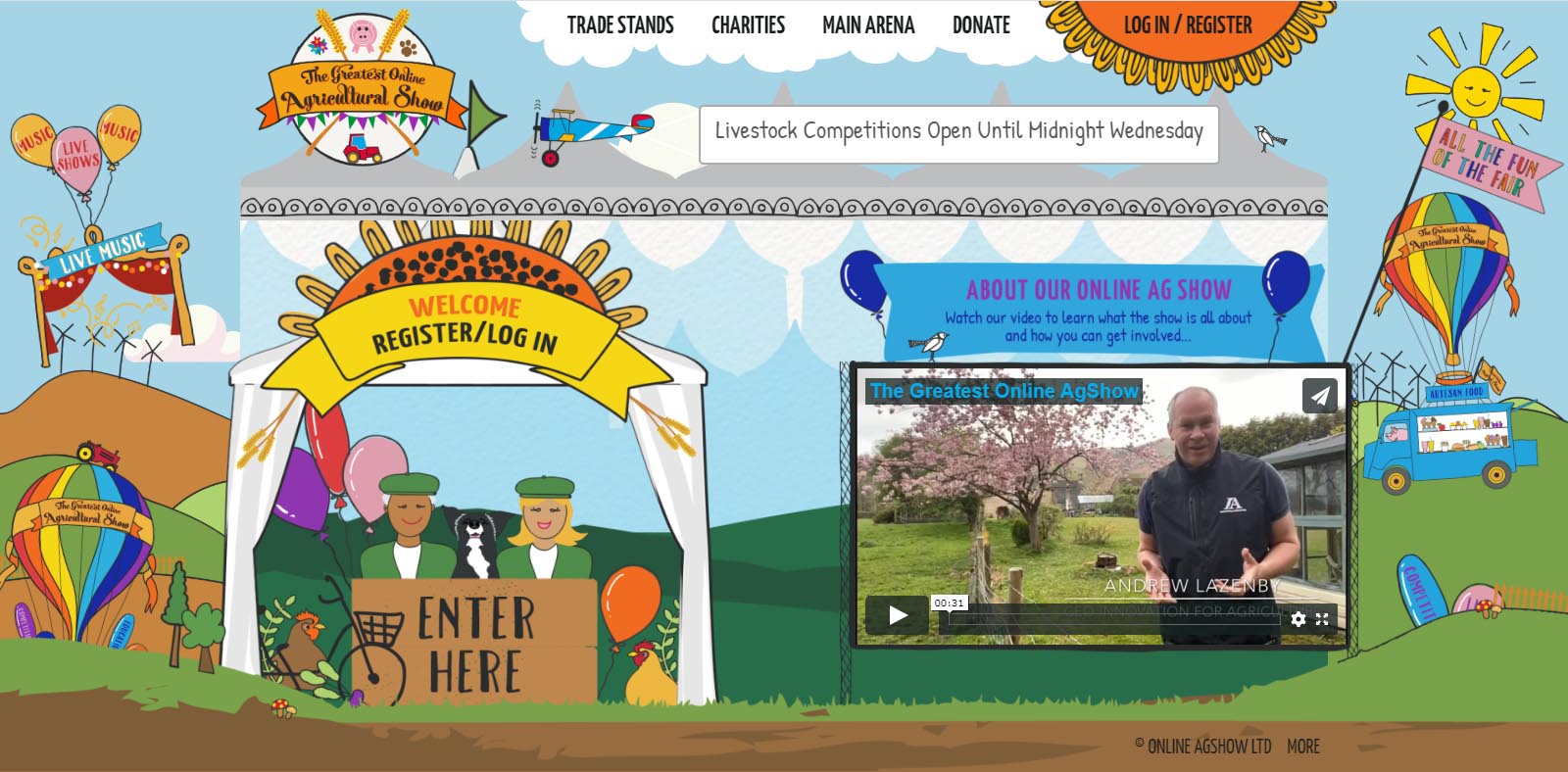
In this post we sheds light on the fascinating world of the agricultural show and invite you to join us in revisiting the extraordinary work of photographer Arnhel de Serra, which we’ve been lucky enough to explore at The MERL before. His amazing exposé of The Country Show was shot over a 10-year period between 2004 and 2014 and sought to capture the quirky, strange, and invitingly surreal world of a whole series of similar events.
In many parts of the world and for many thousands of years people have celebrated (and no doubt competed to raise) the best crops and the finest livestock. However, the earliest event we would really describe as an agricultural show was held just over 250 years ago, in the mid-eighteenth century. Salford Agricultural Society organised the first agricultural show in Lancashire, England, in 1768. Ever since then, agricultural societies, breed societies, and other groups have planned and presented the work of the British farming community in these peculiar public contexts.
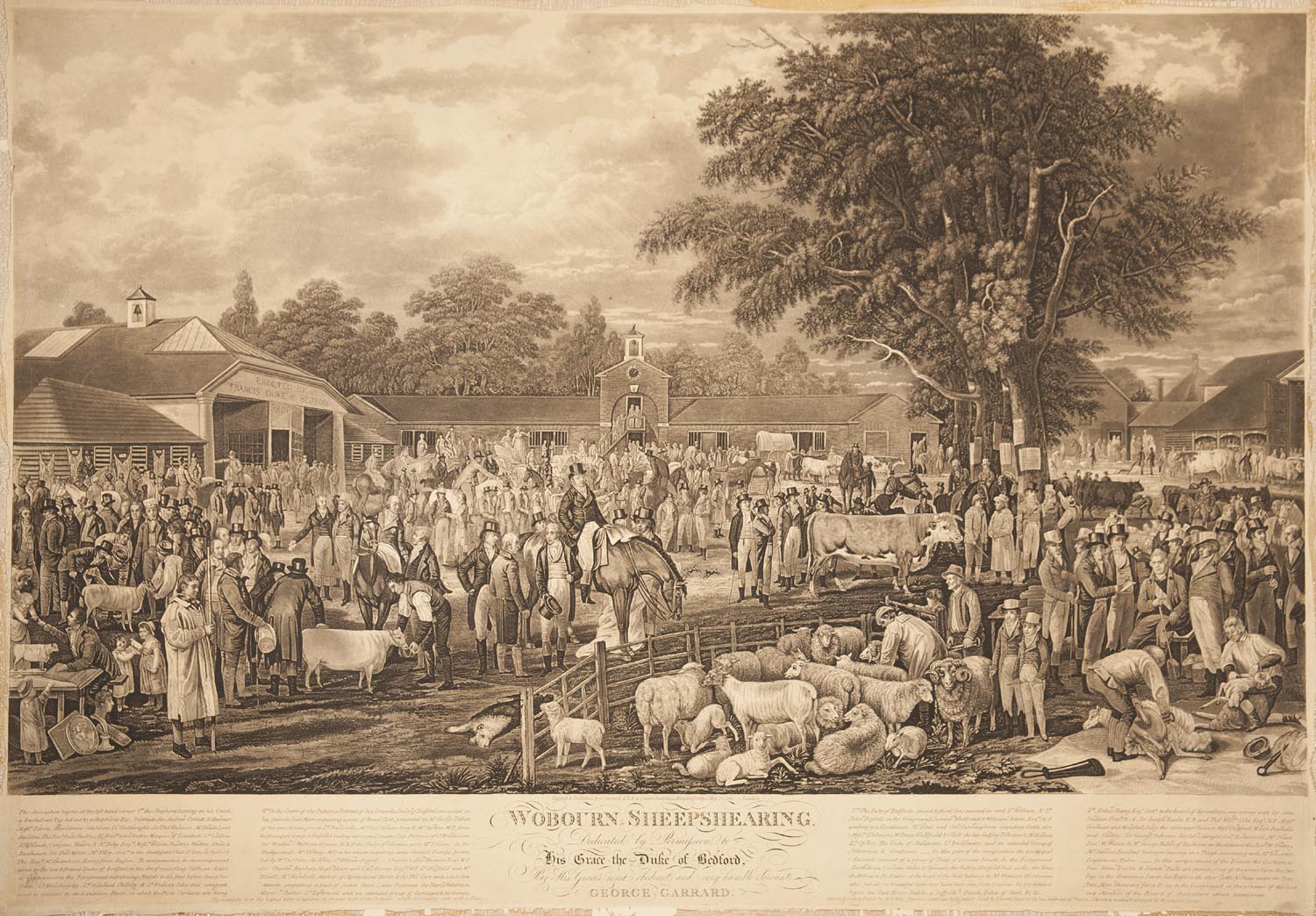
These events were originally intended as a regional space for agriculturalists and specialists in animal husbandry to compare the products of their hard work and to share expertise and ideas. The ‘Wobourn Sheepshearing’ shown in this print is a perfect example. Hosted by the Duke of Bedford on his Woburn Estate, this was a chance for the educated and landed elite of the neighbourhood to mingle with the labouring specialists who had hands-on knowledge of farm work. In such contexts they met, if not as equals then as colleagues, with shared interest in improving and honing skills and productivity. The present-day Woburn Estate is home to Woburn Safari Park. It’s the same place but has a different spelling than the name on the print (plus, it has a few more meercats, giraffes, and tigers these days).
The print of the ‘Wobourn Sheepshearing’ was published in 1811, having been copied from an 1804 oil painting by the artist George Garrard. In the image, the pavilion in the background is marked as having been erected in 1801. The artist himself appears seated in the lower-left-hand corner, the Duke on his horse in the centre, and we are able to identify all those present by reading the comprehensive listing at the base. The text gives names to all those pictured, from the top-hatted gentry to the smock-wearing shepherds (to find out more about smocks why not check out the #MuseumFromHome blog post).
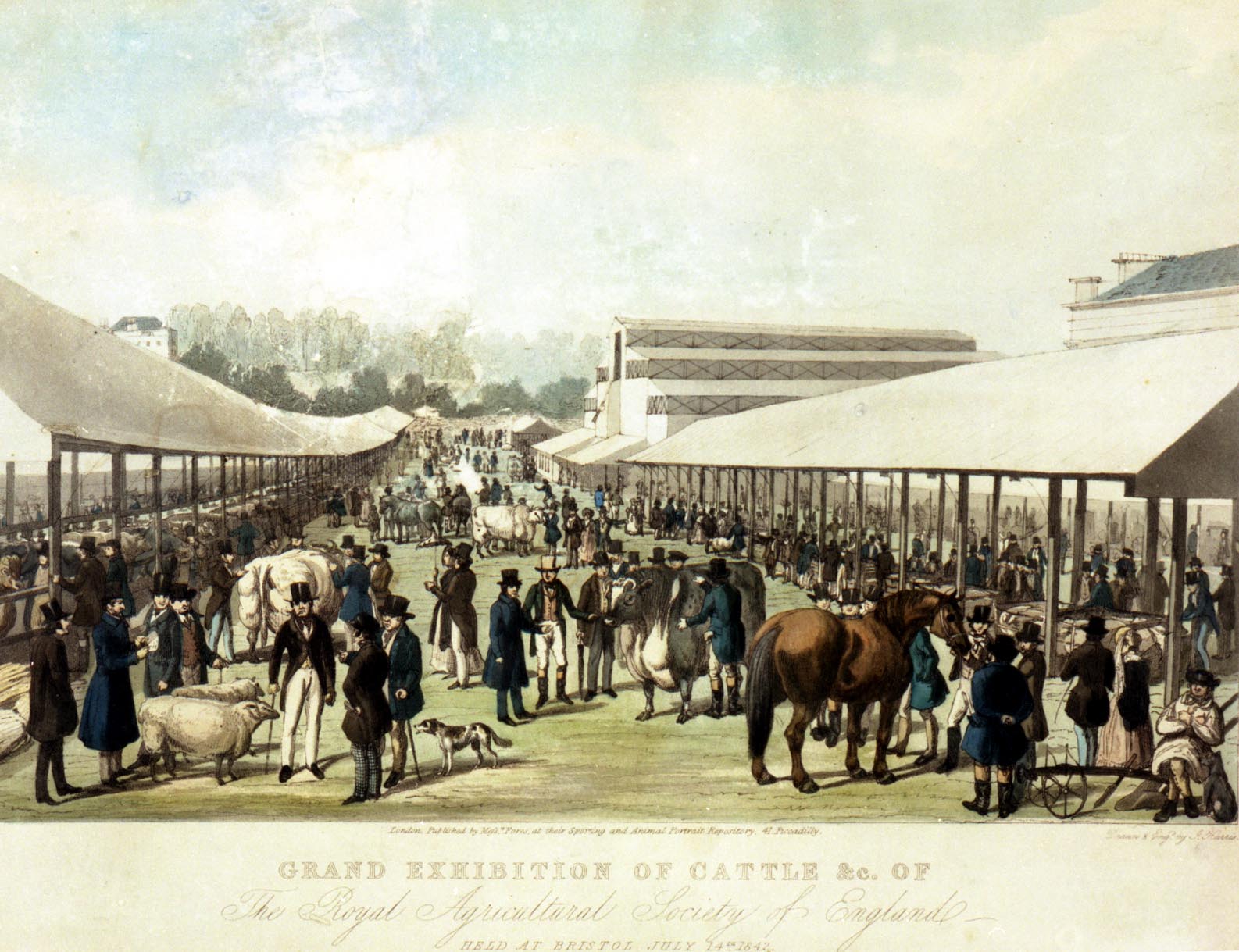
In 1839 a group of prominent members of the farming community met in Oxford and their gathering was to be the first of many national agricultural shows in England. The following year the group were granted a charter, forming the Royal Agricultural Society of England. This print shows the Grand Exhibition of Cattle at the Royal Show in Bristol in 1842. As is obvious from the extent of this display, these events had already come a long way since the agricultural shows of the mid-eighteenth and early-nineteenth centuries. Indeed, they were rapidly growing into into a means for those from urban and non-farming backgrounds to dip their toes into the mysterious world of agriculture.
Of course, back in the 1760s most people in the UK still lived and worked in rural areas, so almost everyone knew a good deal about country life. By the mid-nineteenth century the balance had begun to tip in favour of urban density, with the 1851 census recording a higher number of people living in towns and cities for the very first time. This was also the year when the term’countryside’ entered popular use, revealing the moment when rural and agricultural life became increasingly unfamiliar to the vast majority.
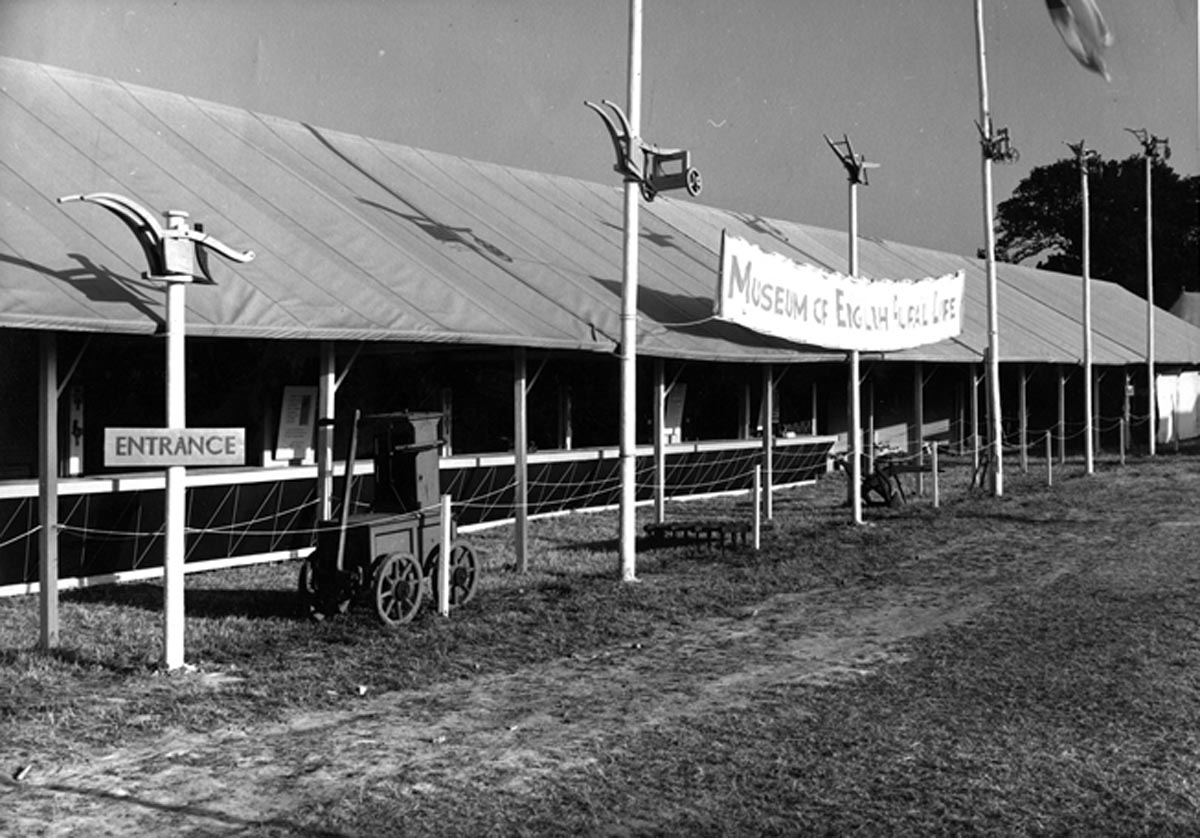
Fast forward a century to the early 1950s and festivals of rural life had become a mainstay of both the agricultural and, indeed, the national calendar. Museums and heritage had even become part of the offer. From its foundation in 1951 The MERL maintained a presence at the Royal Agricultural Show. For the 1951 displays in Cambridge the Museum mounted a vast ‘Exhibition of Machinery a Hundred Years Ago.’ In Newton Abbot in 1952 they filled a trade stand with a fully-designed display complete with wall-hangings fresh from the Southbank exhibits of the Festival of Britain. In Nottingham in 1955 The MERL stand echoed the history of the show itself, taking the form of the first nationaal gathering back in Oxford in 1939. Staff dressed up in top hats and tails and welcomed the Duke of Gloucester to their immersive exhibit.
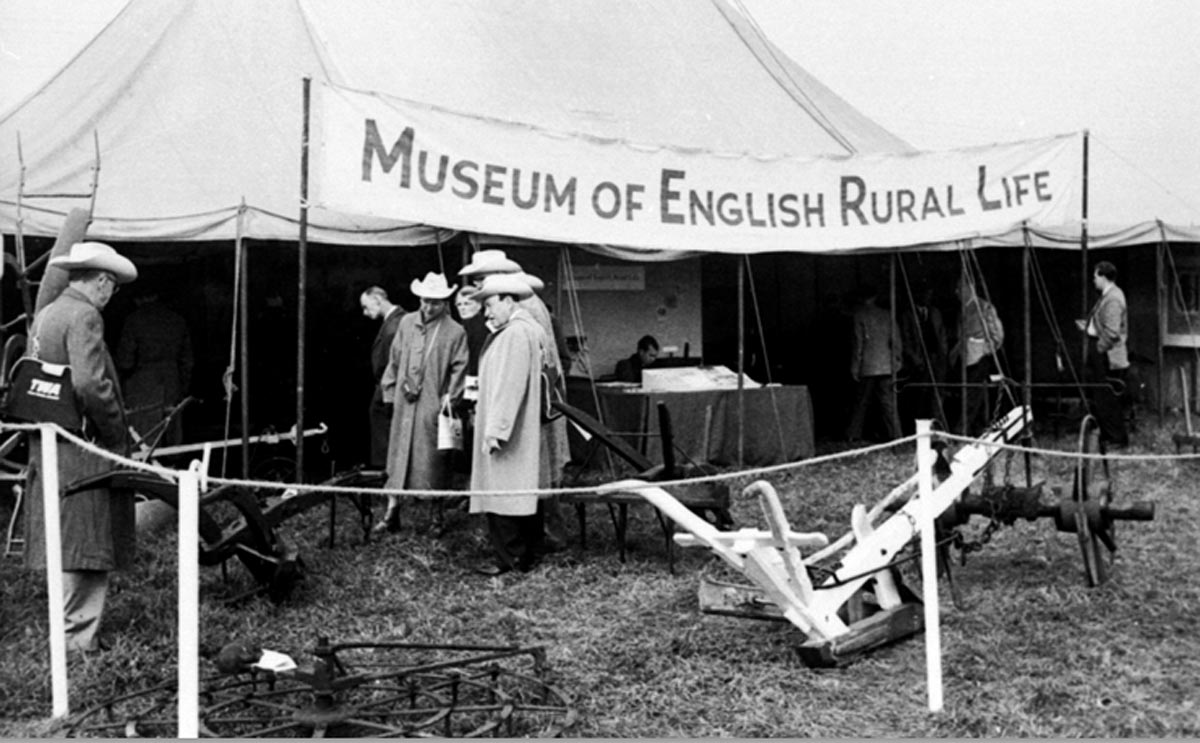
Of course, agricultural and country shows aren’t confined to the world of livestock. Indeed, the variety of events on offer expanded rapidly. The first ever ploughing match was organsied by the Odiham Agricultural Society in Hampshire in 1783. Over the following two centuries such competitions went global. When the World Ploughing Championships came to Shillingford, England, in 1956, The MERL took along a marquee of interesting artefacts, and allowed champion ploughman Nelson Tamblin to take one of their historic horse ploughs for a spin. Why not pay a virtual visit to our Collecting Rural England gallery? This space is based on the Museum’s stands and tents at these 1950s events, where staff spoke to rural people, accepted offers of artefacts, and raised awareness of their important work. Or, you could take a look in the Our Country Lives gallery, where you can see one of the magnificent Festival of Britain wall-hangings, which were last on public display on The MERL’s stand at the 1952 Royal Show!
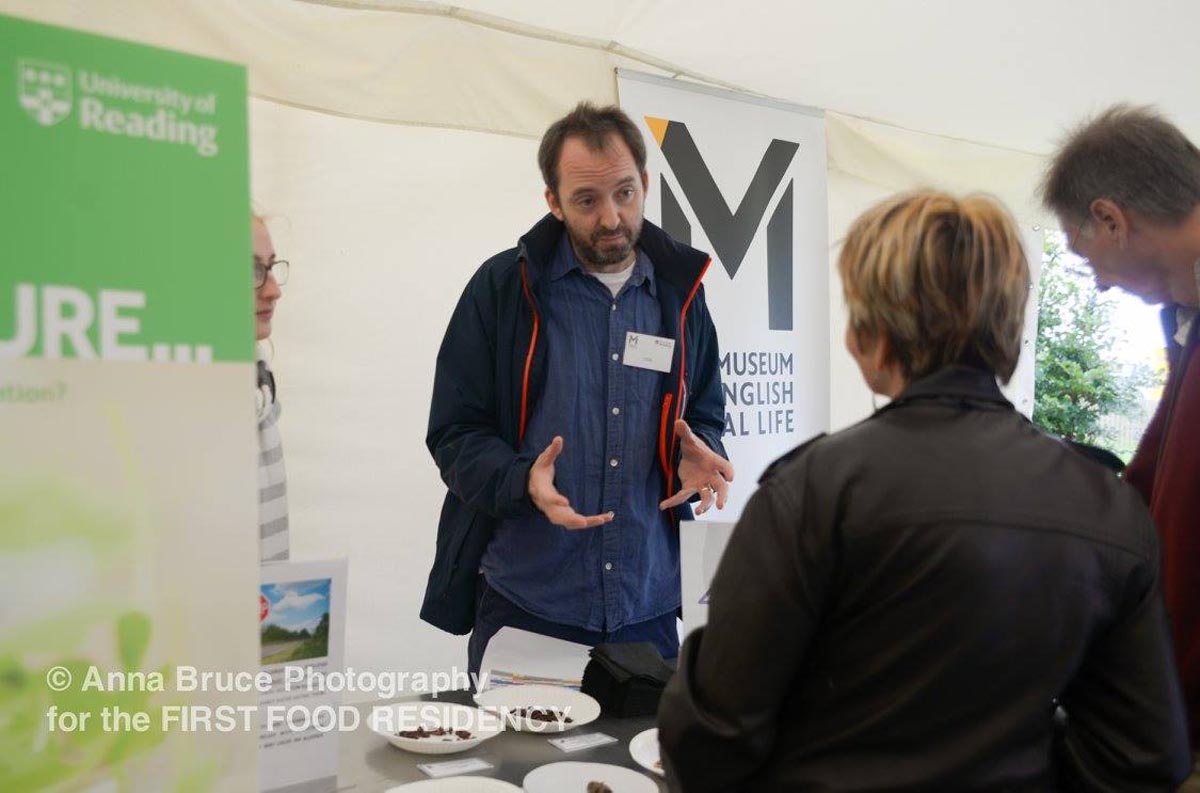
Back at The MERL we continue to recognise the importance and value of agricultural shows. We have a regular presence on the University of Reading stand at the Berkshire Show, where our offer proves popular. Every year is a pleasure, but in terms of a few highlights you can take a peek at how we partnered up with the BBC radio serial The Archers for our joint-60th birthday celebrations in 2011, took home silverware for dairy-related displays in 2012, won prizes for food science activities in 2016, and shared a virtual quadbike experience and much, much more last year. If you want a taste of this content from 2019, check out these online films of the virtual shepherding experience, which were recently repackaged for you to access from home.
In 2018, it was with this same sense of excitement and enthusiasm for country shows that we welcomed photographer Arnhel de Serra to The MERL for an ‘In Conversation’ with anthropologist Bee Farrell (you can watch a video of this event here). Together they revealed the rich history of these events and explored ideas that have shaped Arnhel’s vibrant and engaging images. In the course of this fascinating discussion, we retraced Arnhel’s photographic journey to many rural and agricultural-themed gatherings. These included (amongst many others) the Royal Cornwall, Royal Norfolk, Royal Welsh, East of England, Kent County, Royal Highland, Royal, South of England County, and the Hampshire and New Forest. Many shows have been cancelled for 2020 (and some of those Arnhel visited no longer exist at all). As such, Arnhel’s images provide a poignant and timely reminder of the fleeting, personal moments that bring these events to life.
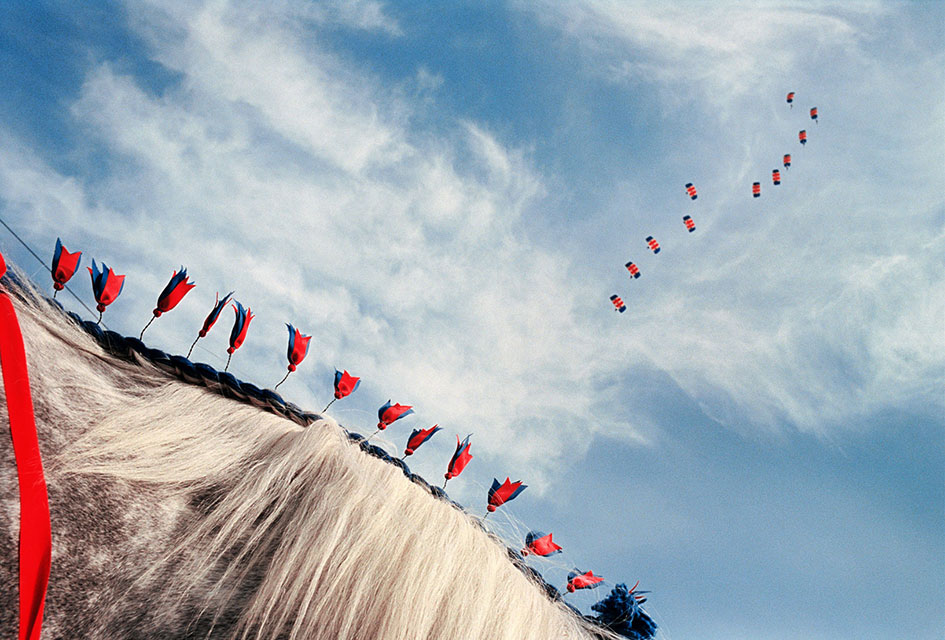
So, we offer this blog post like our own prize cup, presenting it to the whole farming community and doing so in honour of the amazing events that have sadly drawn to a close and of those cancelled for the coming season. Also, in celebration of the extraordinary people and animals that populate the world’s agricultural shows, we invite everyone visiting The Greatest Online Agricultural Show to join us at the virtual opening of a new online exhibition. Virtual fizz and canapés at the ready! The images in this gallery have been selected from The Country Show by Arnhel de Serra and serve as a reminder of the fun and friendship we will find online and in many wonderful shows to come. As we navigate this new, digital chapter in the history of our agricultural shows, remember the personal touches that, come rain or shine, make these brilliant gatherings into the very ‘best in class’.
You can explore more of Arnhel de Serra’s images online here and see more of his work on the JSR agency website. Copies of the images in the online exhibition can be made available direct from the photographer on request.

Hi,
I am really interested in this article and am researching agricultural shows for my Event Management Masters. It would be really useful if you would be kind enough to point me in the direction on resources regarding the history of agricultural shows as there does not seem to be a huge amount of information available.
Hi Annabel. Thanks for your interest. At the Museum we hold an extensive library and archive, more details of which are available on our online database. I’ll also drop you a line directly to get a sense of specific areas of interest. Best wishes, Ollie Douglas (Curator of MERL Collections).